In an industry predominantly sited across Asia, STEP Certified Partner Sumaq Alpaca presents a striking alternative: a Lima-based rug production hub connecting Peru to global markets. This work is a testament to STEP’s commitment to support efforts to make fair conditions the global standard in all handmade carpet sectors—big or small.

The handmade-carpet sector is heavily concentrated in Asia, with estimates suggesting that over 95% of major rug manufacturing capacity sits east of the Americas. Sumaq Alpaca Rugs, however, is not part of that majority. Founded in 2010 by Derek Beech and Collis Verdicchio, Sumaq Alpaca is a Peru-based handmade carpet design and production studio connecting Andean artisans with global markets through design partnerships and international distribution.

The idea for Sumaq Alpaca Rugs came to Beech and Verdicchio after years of travelling through South America. Their experiences and the strong relationships with local communities they built along the way left them with a clear mission: to develop a Peruvian production center that met international quality expectations and ensured fair and dignified working conditions. Approaching sixteen years later, their mission has proven successful. As Derek reflects on Sumaq’s beginnings, he emphasizes the commitment that has guided the company from day one:
“We had a vision, we stayed true to it, and today we’re incredibly proud of what Sumaq Alpaca has become. Our company is all about the people in it—their skill, their dedication, their heart. The quality and passion they bring to every rug is what our clients feel. We love hearing that what we’re doing stands apart—that we’re creating something different, something real.”
— Derek Beech, Co-Founder of Sumaq Alpaca Rugs
A Textile Tradition with Deep Roots
Weaving in Peru dates back more than 5,000 years. From the early civilizations of Caral and Paracas through the Wari and Inca empires, textiles served as a sophisticated medium of cultural identity, spiritual meaning, and social expression. Collections such as those at the Museo Amano in Lima showcase this deep textile heritage, illustrating techniques and motifs developed over millennia that gave Andean cloth global renown as one of the world’s oldest and most refined textile traditions. This legacy continues today, particularly in Ayacucho, Cusco, Puno, and Huancavelica, where weaving is still passed down within families and practiced on backstrap or simple floor looms.
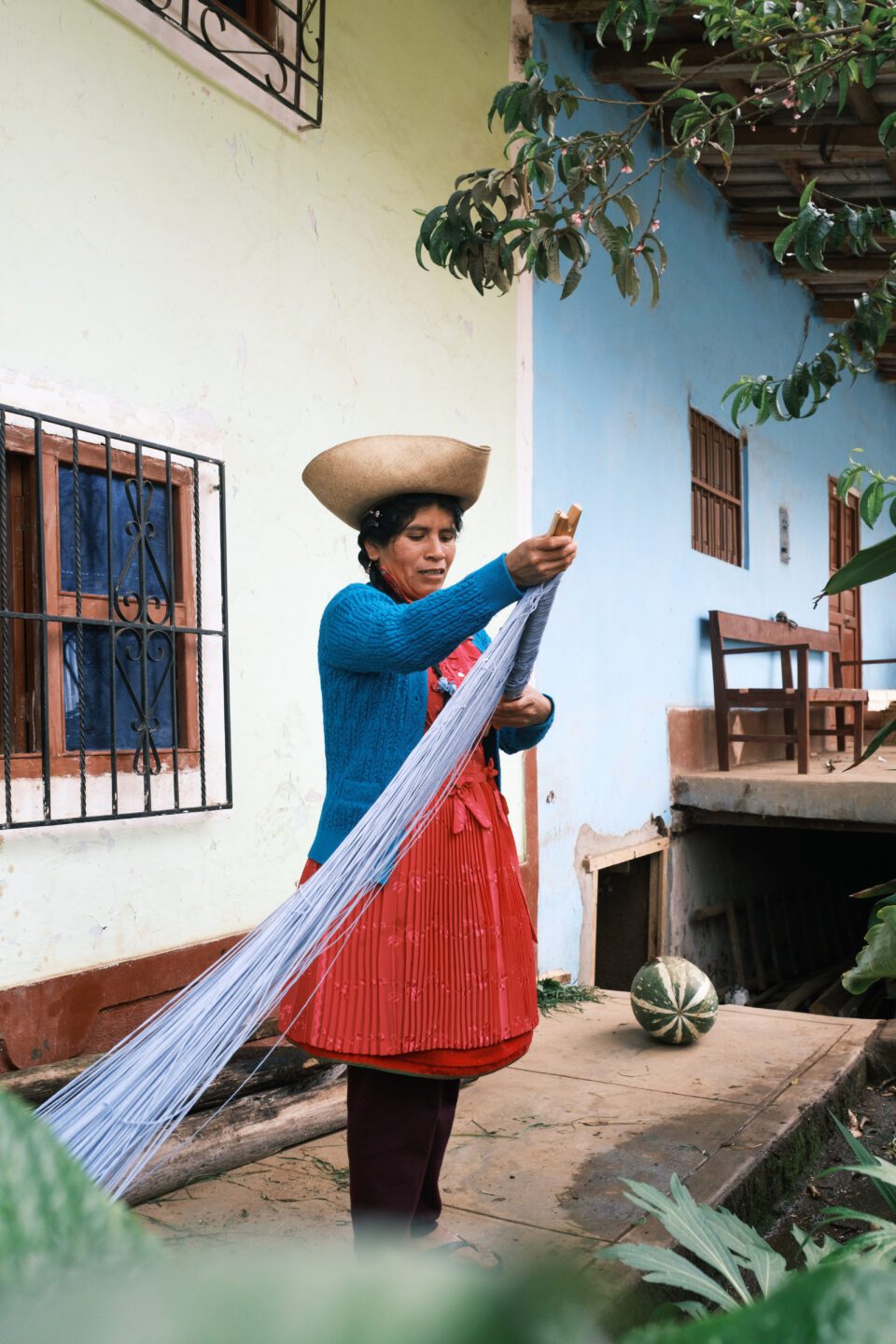

“Every artisan has their own way of working. For me, it’s important to keep learning because weaving is part of our culture.”
— Alejandro, 20, Weaver at Sumaq Alpaca Rugs
The survival of this knowledge, however, faces growing pressures that mirror global trends: cheaper synthetic imports, mass-produced imitations, and rapidly advancing textile technologies continue to weaken the market for handmade work. Traditional clothing that once had everyday relevance is now often limited to ceremonial or tourism contexts, which reduces economic opportunities for artisans. As a result, fewer young people see weaving as a viable livelihood—a situation that threatens not only Peruvian textile heritage but also the continuity of craft traditions worldwide. The Centro de Textiles Tradicionales del Cusco (CTTC) offers one example of an initiative attempting to combat this by collaborating with rural weaving communities to sustain skills, fair incomes, and intergenerational transmission.
The workshop of Sumaq Alpaca brings together a new generation of trained artisans—many originating from highland regions such as Huancavelica—who carry a deep tradition of textile weaving and are now expanding those skills into carpet production. Alejandro, a 20-year-old weaver, expressed his satisfaction in this expanded skillset: “Every artisan has their own way of working. For me, it’s important to keep learning because weaving is part of our culture.”
Alpaca: Cultural Foundation and Technical Advantage
A key link in sustaining this heritage lies in alpaca fibre, long valued for its softness, strength, warmth, and naturally low environmental impact. Responsible sourcing of alpaca in the high Andes supports pastoral livelihoods and helps maintain practices that have shaped communities for centuries. Aware of this delicate relationship and balance, Sumaq Alpaca Rugs decided to build on this foundation, working to revitalize this tradition while expanding it into the niche of luxury rugs. A heritage practice reimagined for the contemporary consumer. The company sources its fibre from alpacas raised at altitudes above 15,000 feet (approximately 4,570 metres), where slower animal growth produces finer and more resilient fibre. This not only preserves cultural continuity but also provides a distinct technical advantage—delivering rugs with superior durability, loft, and comfort underfoot. It also offers Andean craftsmanship competitive distinction in global markets.
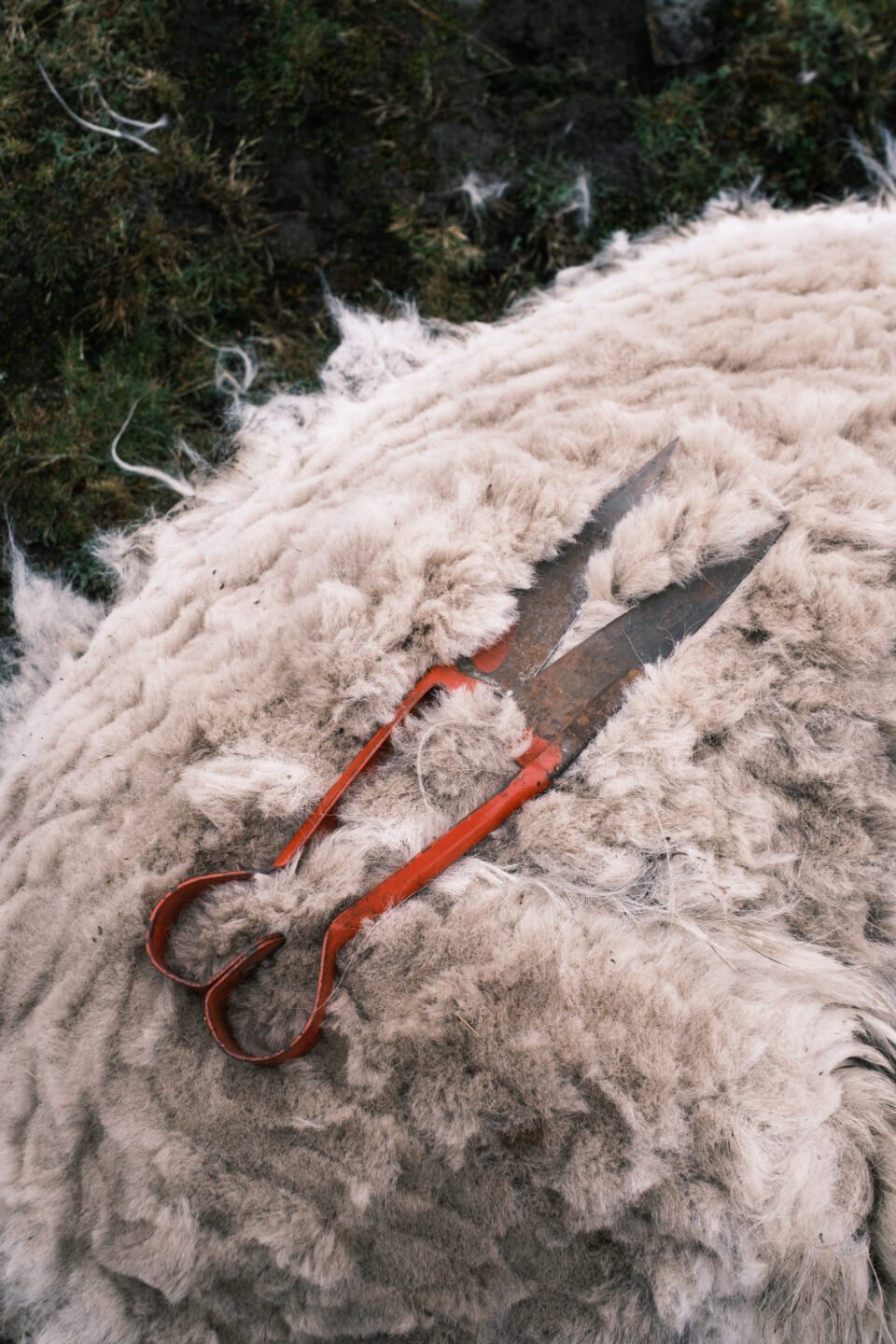
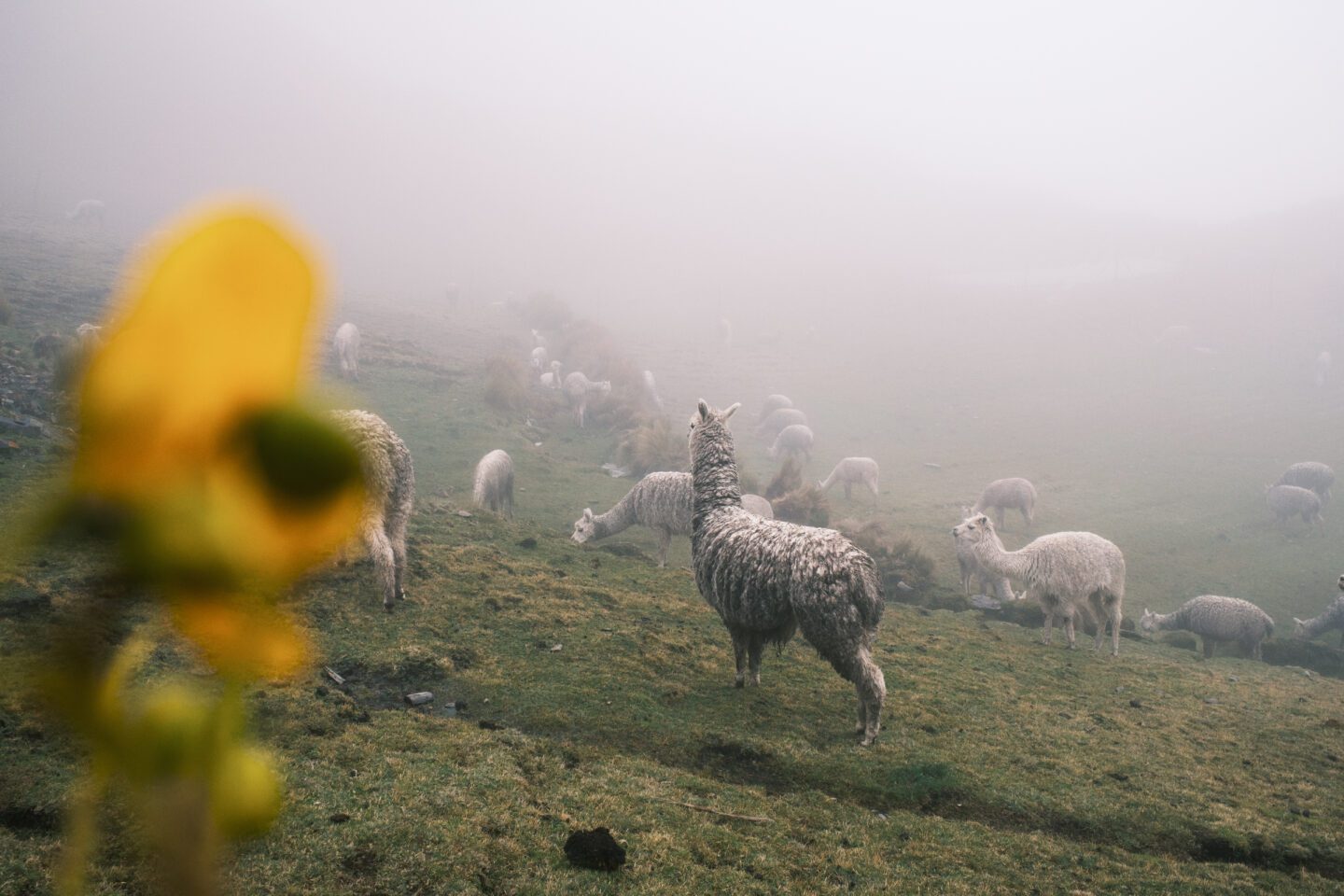

From Distributed Craft to a Centralised Lima Workshop
In terms of production, Sumaq Alpaca Rugs originally worked exclusively with independent rural weavers; however, the pandemic inspired them to evolve this model and in 2022, they established a consolidated workshop in Lima. The workshop brings together a new generation of trained artisans—many originating from highland regions such as Huancavelica—who carry a deep tradition of textile weaving and are now expanding those skills into carpet production.

The central facility allows Sumaq to ensure shorter lead times, tighter quality control, and faster product development. More importantly, it allows the company to provide formal employment, monthly salaries, and stronger worker protections—enhancing health, safety, and transparency in line with STEP’s fair trade standards. For the artisans, this structure also means stability, formal training, and the chance to grow within their profession. “I first learned from my aunt and uncle in our village workshop in Paucará, getting to know the looms and traditional techniques,” says Elmer, 22, a weaver at Sumaq. “Here, I’ve been able to specialize in rugs, contribute ideas, and continue growing in what I’m passionate about.”
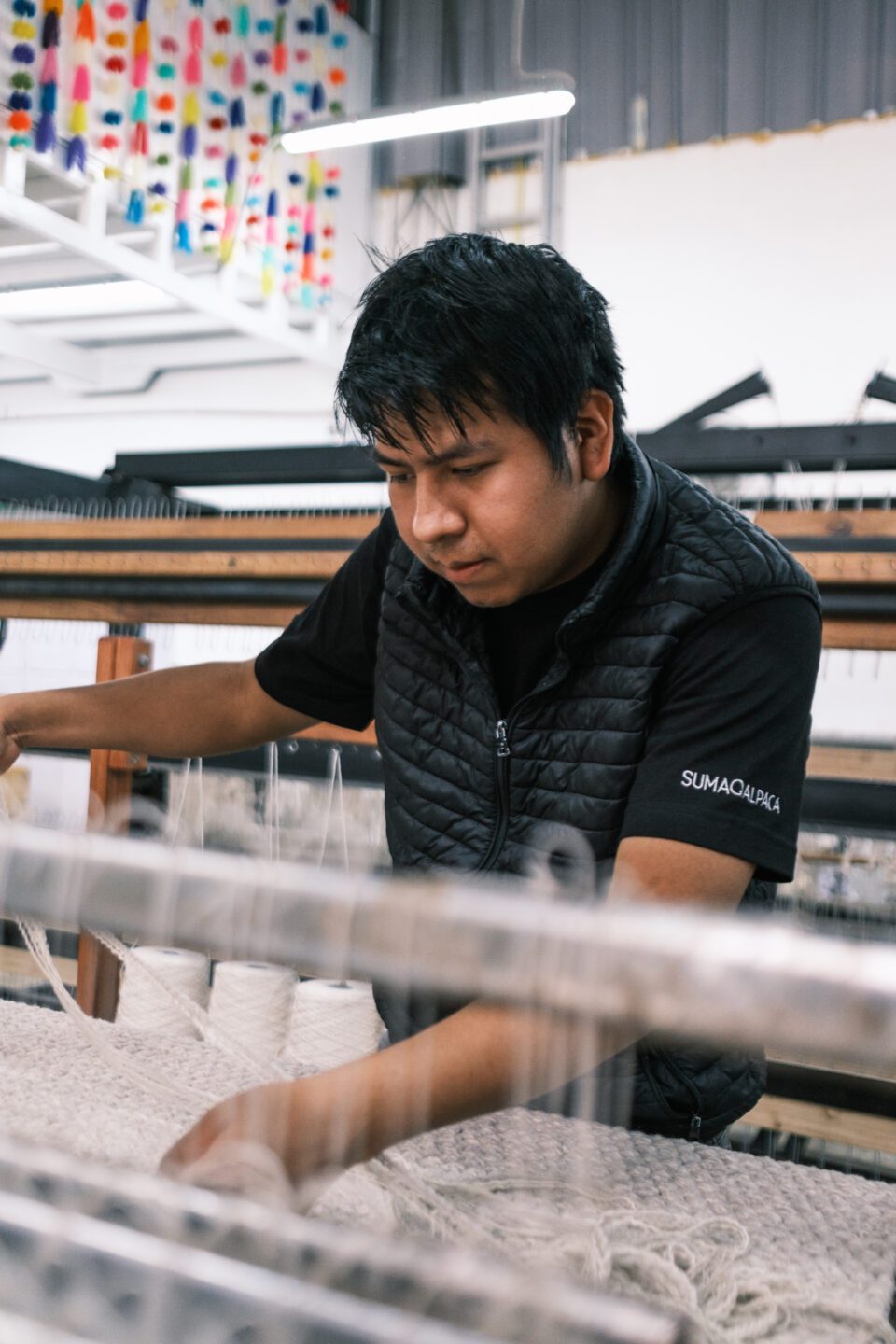


“I first learned from my aunt and uncle in our village workshop in Paucará, getting to know the looms and traditional techniques. Here at Sumaq, I’ve been able to specialize in rugs, contribute ideas, and continue growing in what I’m passionate about.
— Elmer, 22, Weaver
While weaving and finishing are now fully managed in-house, the preparation and spinning of alpaca, llama, and cotton yarns are carried out in cooperation with two of Peru’s leading fibre specialists. For Sumaq Alpaca Rugs, these partnerships reflect their shared values of ethical sourcing, technical excellence, and sustainability. With every stage of production taking place within Peru, from fibre to finished rug, Sumaq achieves seamless coordination, continuous improvement, and full traceability grounded in Peruvian craftsmanship.
Technical Capacity: Countermarch Looms and Hand-Knotted Skills
At the core of the Lima workshop lies the countermarch loom, which is a system rarely used in Peru’s rug sector. Unlike the conventional hand-knotted approach seen in most major rug-producing regions, the countermarch mechanism raises and lowers warp shafts simultaneously, allowing superior tension control and consistent fabric structure across larger pieces. Hand-knotted techniques remain in use for designs requiring dense piles, but the countermarch approach enables efficiency and scale without compromising craftsmanship.
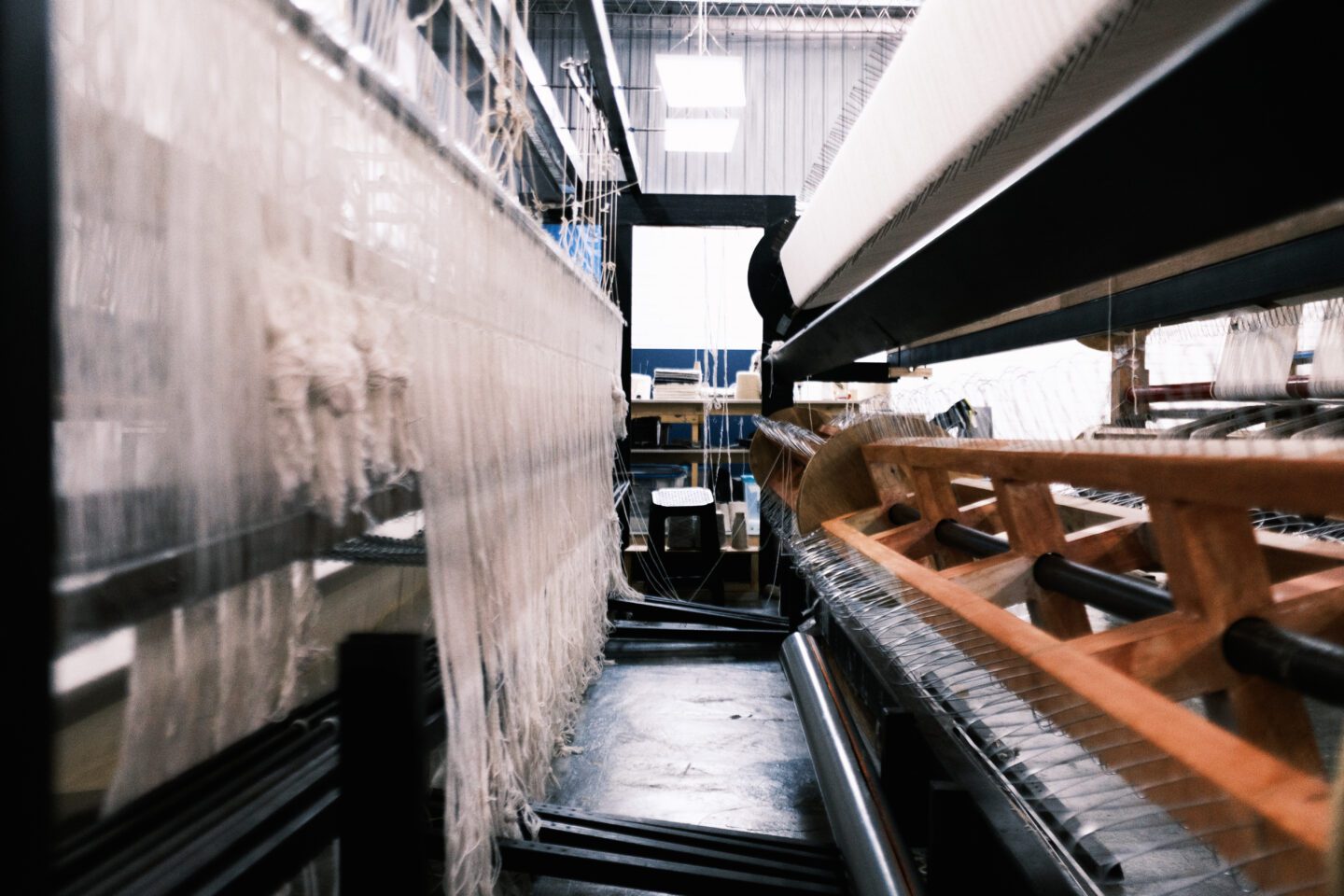

By building its own looms in-house, Sumaq Alpaca gains the flexibility to adapt designs, scale production responsibly, and maintain independence from imported equipment. This approach shows how a small artisan enterprise’s traditional know-how and technical innovation can work hand in hand to strengthen local production and improve quality. Having an on-site technician such as Eldis helps ensure reliable loom performance, ventilation, and product quality control. He explains, “I start the day checking the looms to be sure everything’s working well. Then I go wherever I’m needed—I like to stay busy and keep things moving.”

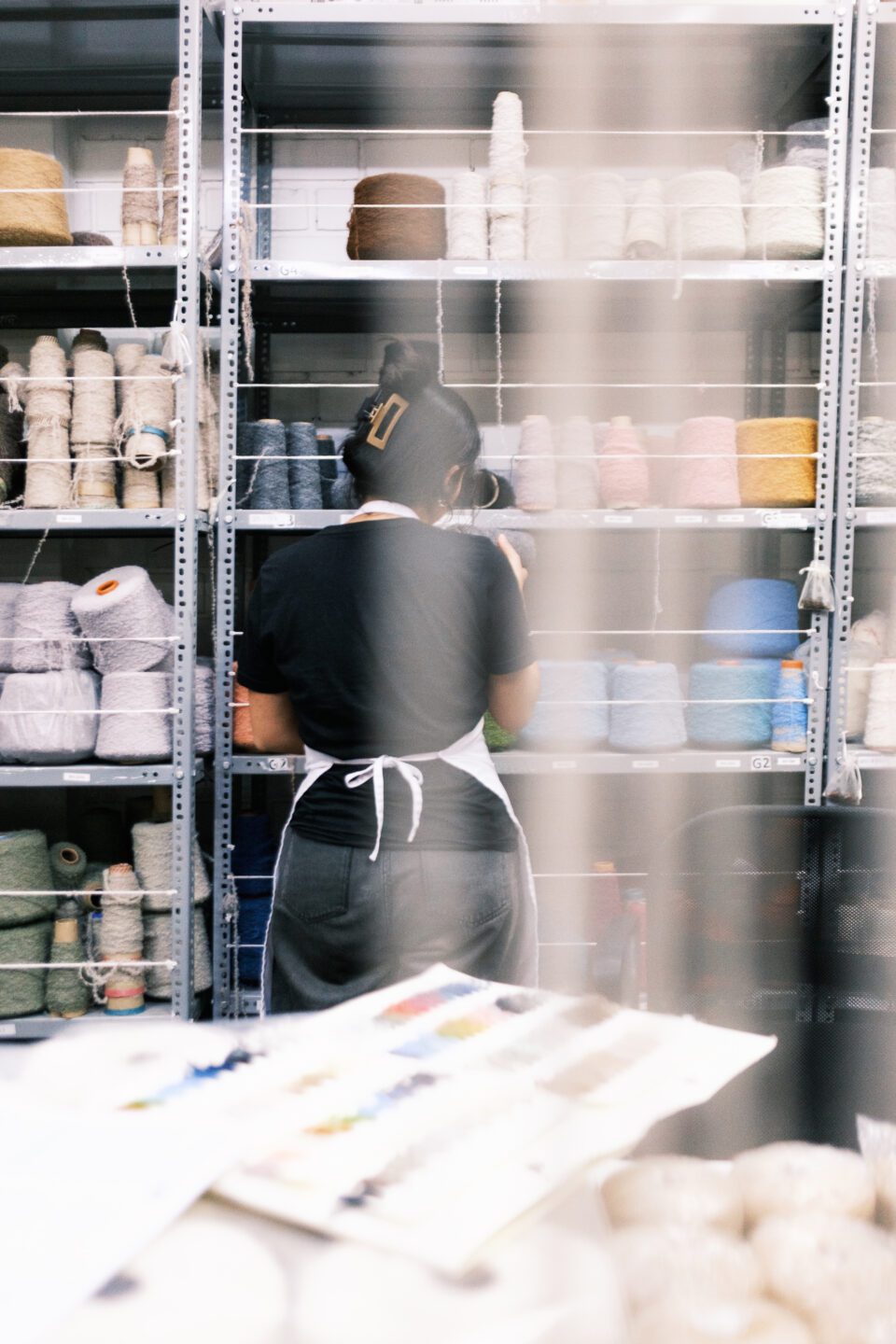

The shared workshop environment also strengthens collaboration between weavers, supports ongoing skill development and enables experienced workers like 31-year-old Samuel to mentor newcomers, including younger weavers from his own family who have recently joined the team.
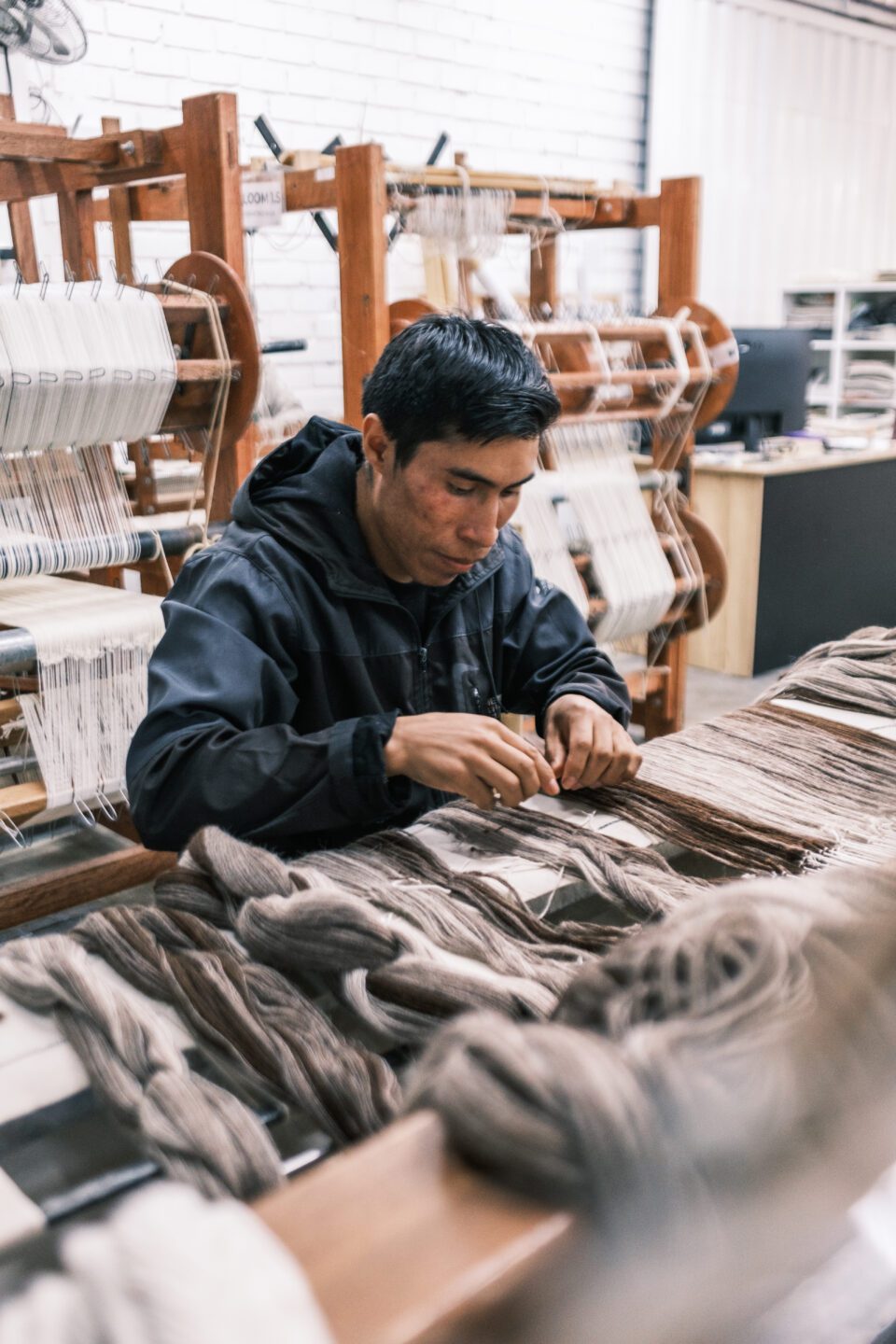
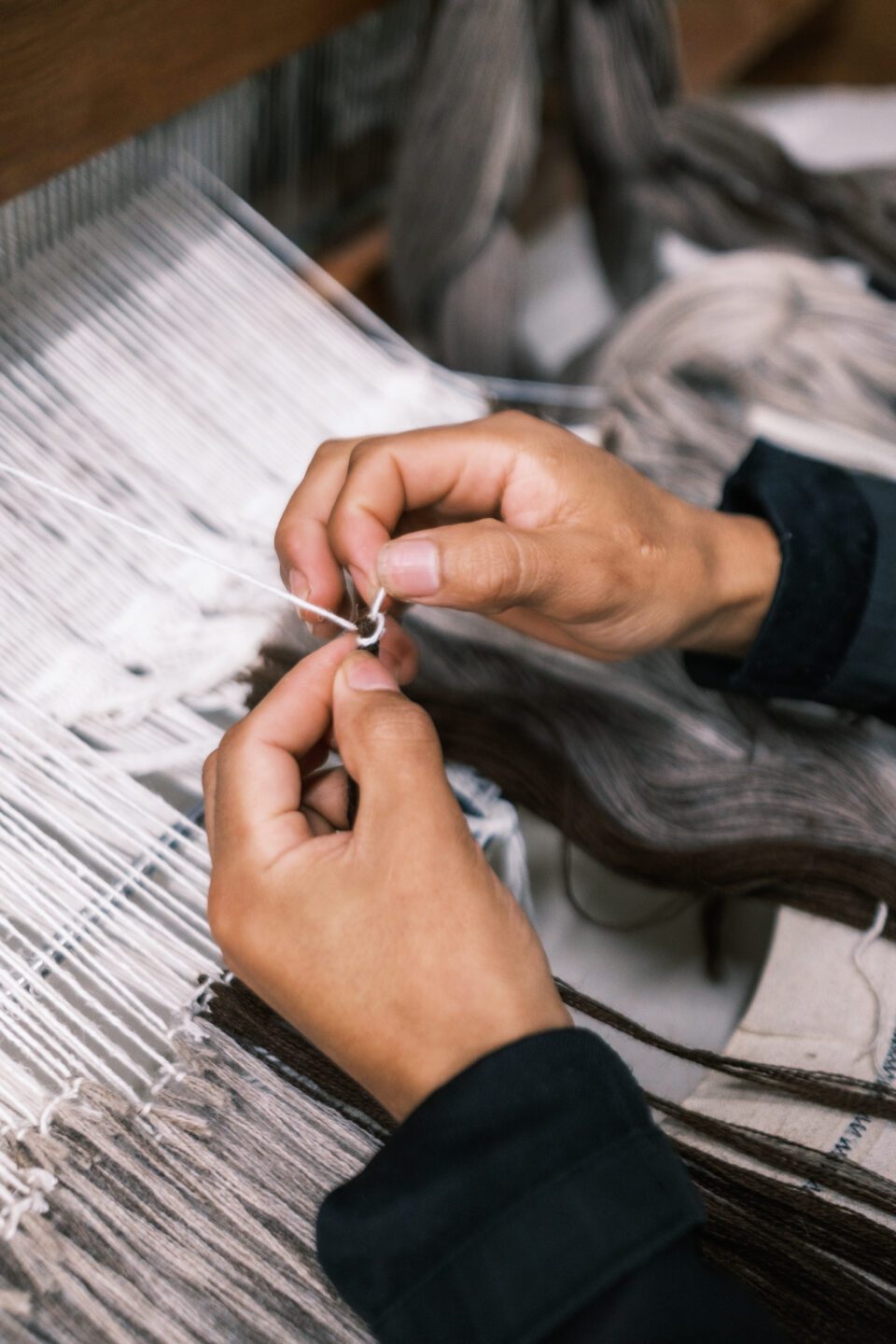

“We learn by working together and sharing what we know. The knowledge grows when we share it.”
— Samuel, 31, Weaver

Working Conditions and Worker Experience
Sumaq’s employment model stands out for its formalization. All artisans are salaried employees, not paid by the piece—a significant shift from the informal norms of the wider industry. The approach guarantees stable income, predictable hours, and access to social protections. “We provide all workers with fixed monthly salaries and additional benefits such as housing and education support, daily meals, and performance incentives,” explains Vincenzo, 30, Workshop Manager. “The idea is to make weaving a reliable and respected career.”


“We provide all workers with fixed monthly salaries and additional benefits such as housing and education support, daily meals, and performance incentives. The idea is to make weaving a reliable and respected career.”
Vincenzo, 30, Workshop Manager


Beyond fair pay, Sumaq Alpaca Rugs offers benefits that promote wellbeing and personal growth: daily lunch bonuses, financial support for language courses, and housing assistance for those who have relocated from rural areas. All workers are enrolled in Peru’s national pension (AFP) and health (EPS) systems, and those with children receive the statutory family allowance.
The workplace culture is intentionally collaborative and open, encouraging every artisan to contribute to improvement. “Here the hierarchy is linear—everyone has space to speak,” says Eldis, 34, Technician and Quality Controller. “You can share an idea; it might be right or it might be wrong, but you’re listened to. That’s what makes the work feel collaborative.” Shared spaces such as the kitchen and dining area reinforce this sense of community. “We share food and talk during breaks. Sometimes we even play ping pong after lunch,” adds Juana, 40, Finishing Worker. “The environment here is very different from other jobs I’ve had.”
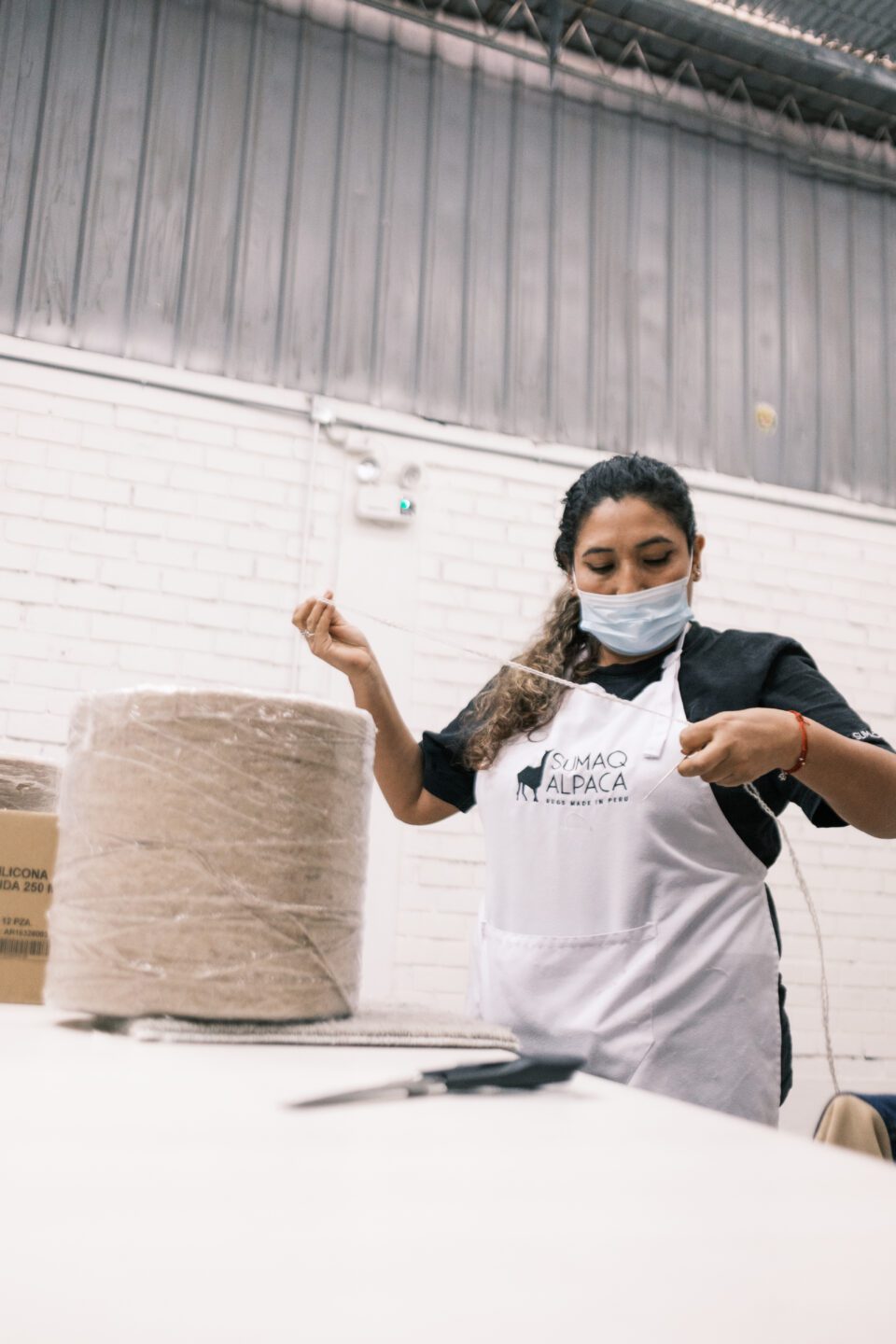
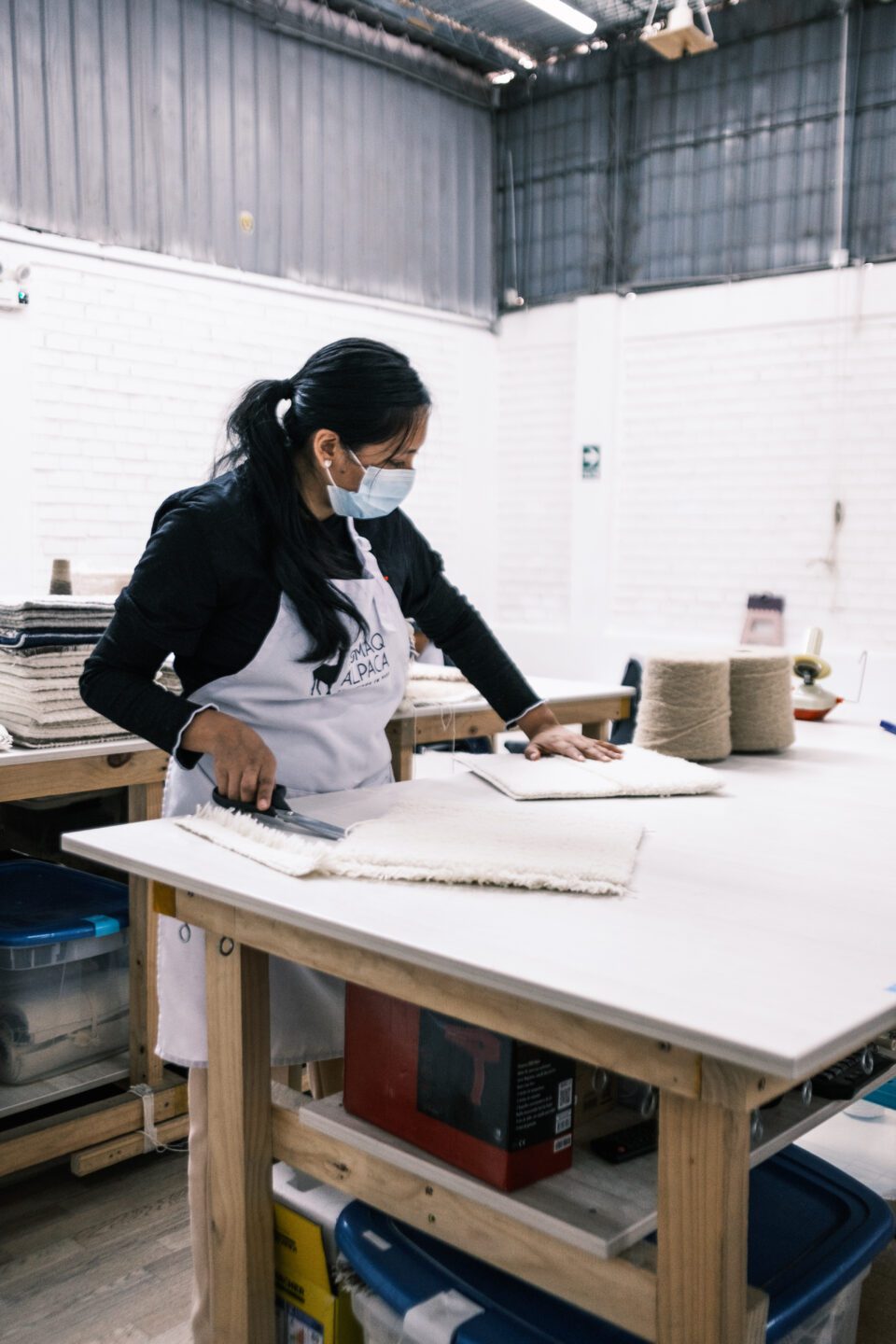
“Here the hierarchy is linear—everyone has space to speak. You can share an idea; it might be right or it might be wrong, but you’re listened to. That’s what makes the work feel collaborative.”
Eldis, 34, Technician & Quality Control
By combining formal employment with a participatory workplace culture, Sumaq Alpaca Rugs is redefining what weaving can mean in a modern context—a respected, professional path built on skill, stability, and mutual respect.
Health, Safety, and Standardization
The studio’s fair employment is paired with a comprehensive approach to health, safety, and continuous improvement. Its Lima workshop operates in full compliance with Peruvian law and the STEP Standard, maintaining regular risk assessments, staff training, and supervision of protective equipment. As part of its occupational safety system, Sumaq conducts annual IPERC evaluations (Identificación de Peligros, Evaluación de Riesgos y Control, or Hazard Identification, Risk Assessment, and Control), which is the nationally mandated process for identifying workplace hazards, assessing risks, and implementing preventive measures.
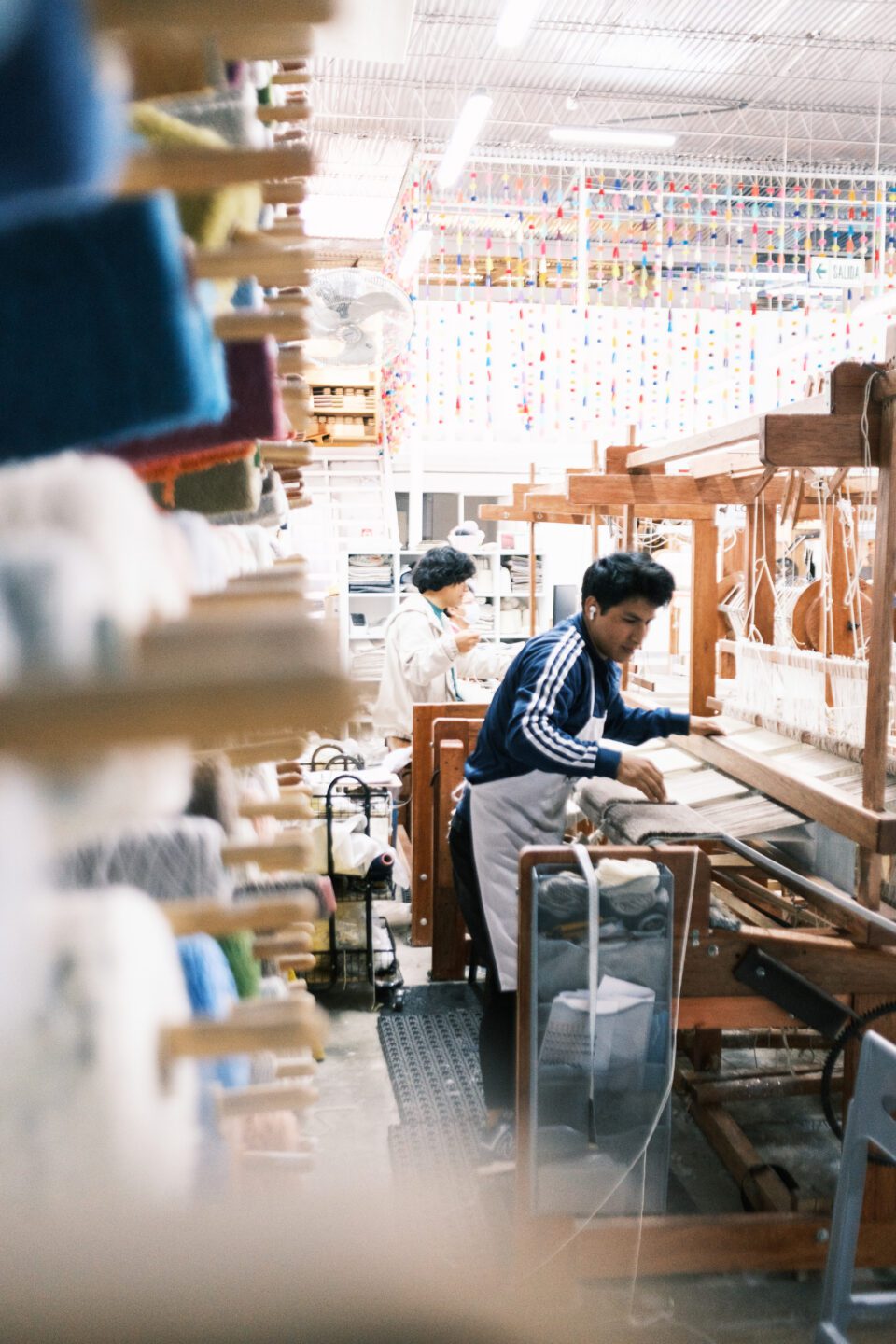
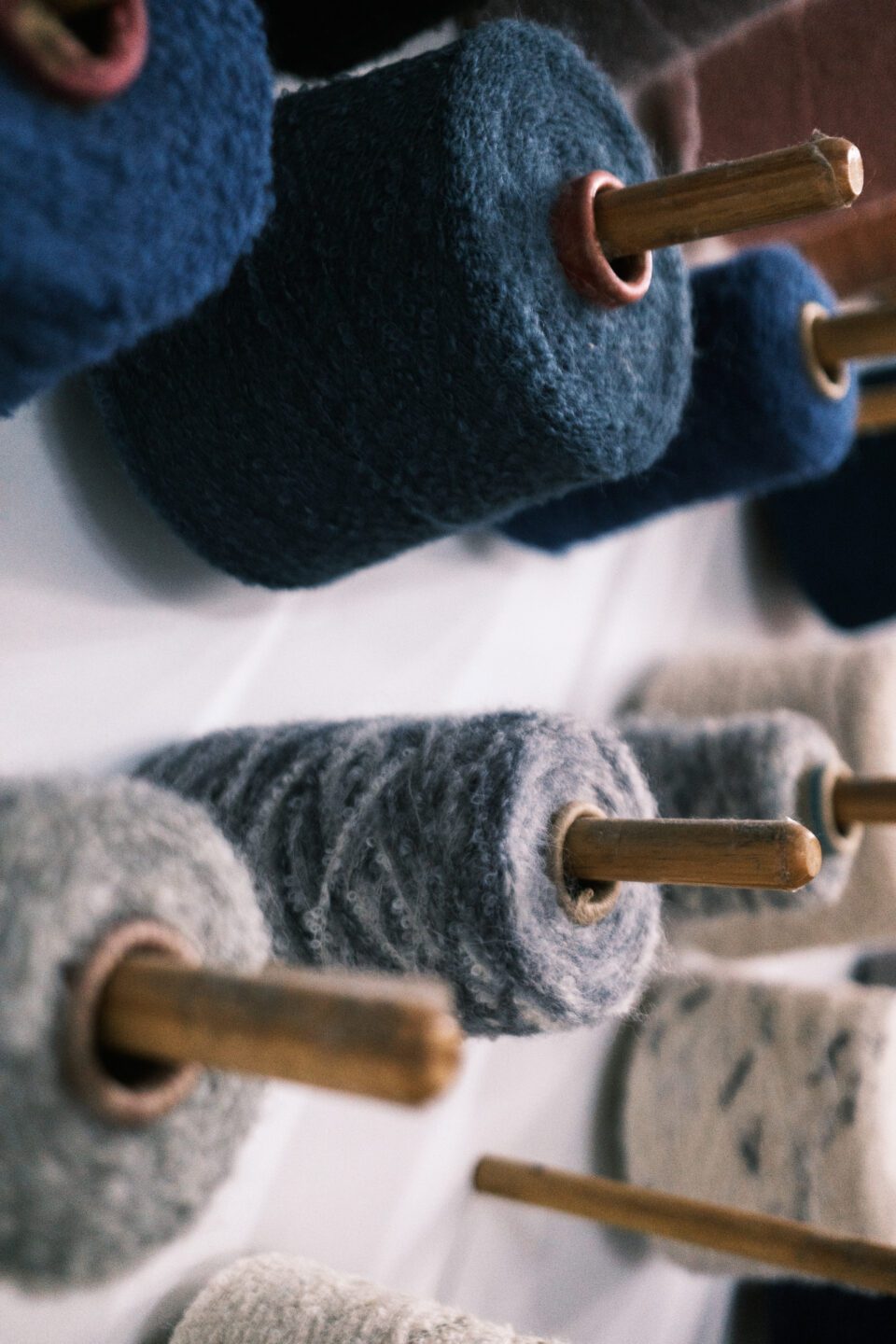
Beyond its own facility, Sumaq Alpaca Rugs also shares this expertise with other small businesses based in the same industrial complex—not all of them textile-related—by organizing training sessions on fair working conditions, health, and safety. This outreach reflects the company’s belief that responsible production should extend across sectors, helping foster a culture of safe and dignified work across the wider business community.
For the artisans at Sumaq Alpaca Rugs, these practices have transformed weaving from an informal home-based activity into a professional occupation built on stability, wellbeing, and respect.
Positioning Weaving as a Viable Profession
Sumaq Alpaca Rugs are reframing weaving in Peru, transforming it from informal home-based work into a skilled and future-oriented profession with real career prospects.Its modern workshop in Lima combines artisanship rooted in rural textile traditions with advanced loom technology, fair salaries, and room for skill development. The model not only invests in and honors ancestral weaving knowledge widely held across Peru, but also connects this heritage to global markets that increasingly demand transparency, ethics, and high-quality handmade design.
As Collis, Co-Founder of Sumaq Alpaca Rugs, reflects on the company’s evolution, he explains: “When we started Sumaq in 2010, virtually no one knew about alpaca rugs. It was exciting showing rugs to clients and promoting Made in Peru. We were proud to be doing things differently in an industry saturated by low-cost manufacturing in the East. Our progression has been slow and intentional. From the beginning, we knew the only way forward was to build a company that truly values everyone who works at Sumaq. We wanted every rug to go out into the world knowing it was made with positive intentions. In a world where many products are made by cutting corners, we choose the opposite.”



Carmen, the workshop’s production manager, has more than 30 years of experience and continues working out of passion for the craft: “People around the world value handmade work. The challenge isn’t with the artisans or the younger generation—it’s ensuring a fair and stable market that lets them keep doing what they love. Innovation can help make our work safer and more efficient, but never at the expense of craftsmanship or the people behind it.”

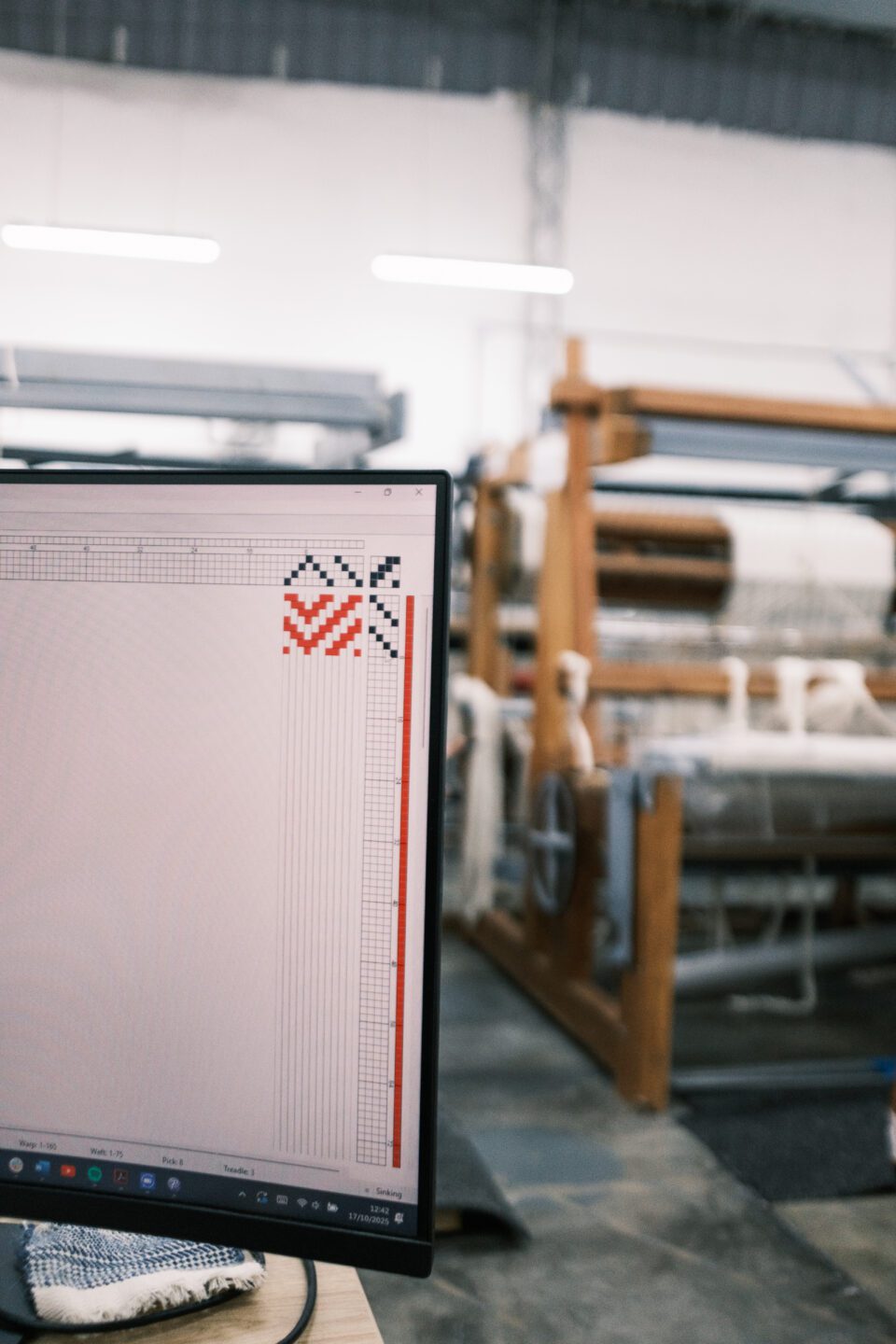
As the workshop continues to grow, Sumaq Alpaca Rugs remains a testament to how high-end rug production in South America can thrive while protecting workers’ rights and strengthening cultural continuity. For STEP, this partnership shows how fair-trade principles can reinforce both heritage and competitive positioning in today’s market.
“People around the world value handmade work. The challenge isn’t with the artisans or the younger generation—it’s ensuring a fair and stable market that lets them keep doing what they love. Innovation can help make our work safer and more efficient, but never at the expense of craftsmanship or the people behind it.”
Carmen, 76, Production Manager

